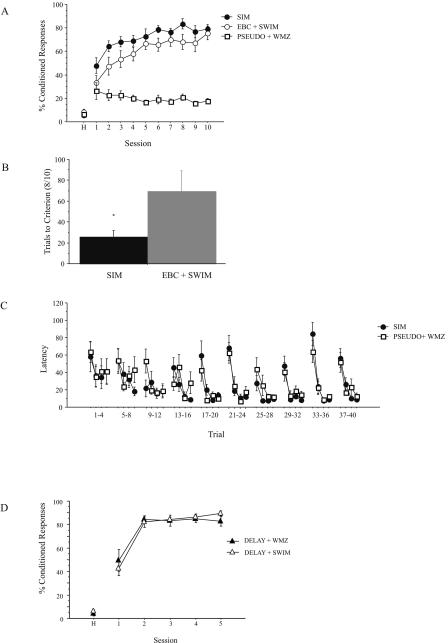Figure 4.
(A) Acquisition rates of trace eyeblink conditioning for 10-session simultaneous training paradigm. SIM animals achieved a significantly greater percentage of CRs over the 10 training sessions compared with EBC + SWIM animals (Fisher’s LSD, P = 0.02). This enhancement of CR percentage was confined to sessions 1 to 6 (F[1,16] = 4.6, P < 0.05); there was not a significant difference in CR percentage between SIM and EBC + SWIM animals for trials 7 to 10 (F[1,16] = 2.16, P = 0.16). Both SIM and EBC + SWIM animals learned the trace eyeblink conditioning task significantly better than did PSEUDO + WMZ animals (SIM, PSEUDO + WMZ, P < 0.0001; EBC + SWIM, PSEUDO + WMZ, P < 0.0001). (B) Number of training trials required for animals to reach a criterion of eight of 10 CRs. SIM animals reached an eight of 10 CR criterion in significantly fewer trials than did EBC + SWIM animals. (C) Learning curve for WMZ acquisition for the 10-session simultaneous training paradigm. There was no difference in latency to the platform between SIM and PSEUDO + WMZ animals. (D). Acquisition rates of delay eyeblink conditioning. There was no difference in CR percentage over training between DELAY + WMZ and DELAY + SWIM animals. *P < 0.05, unpaired t-test.

